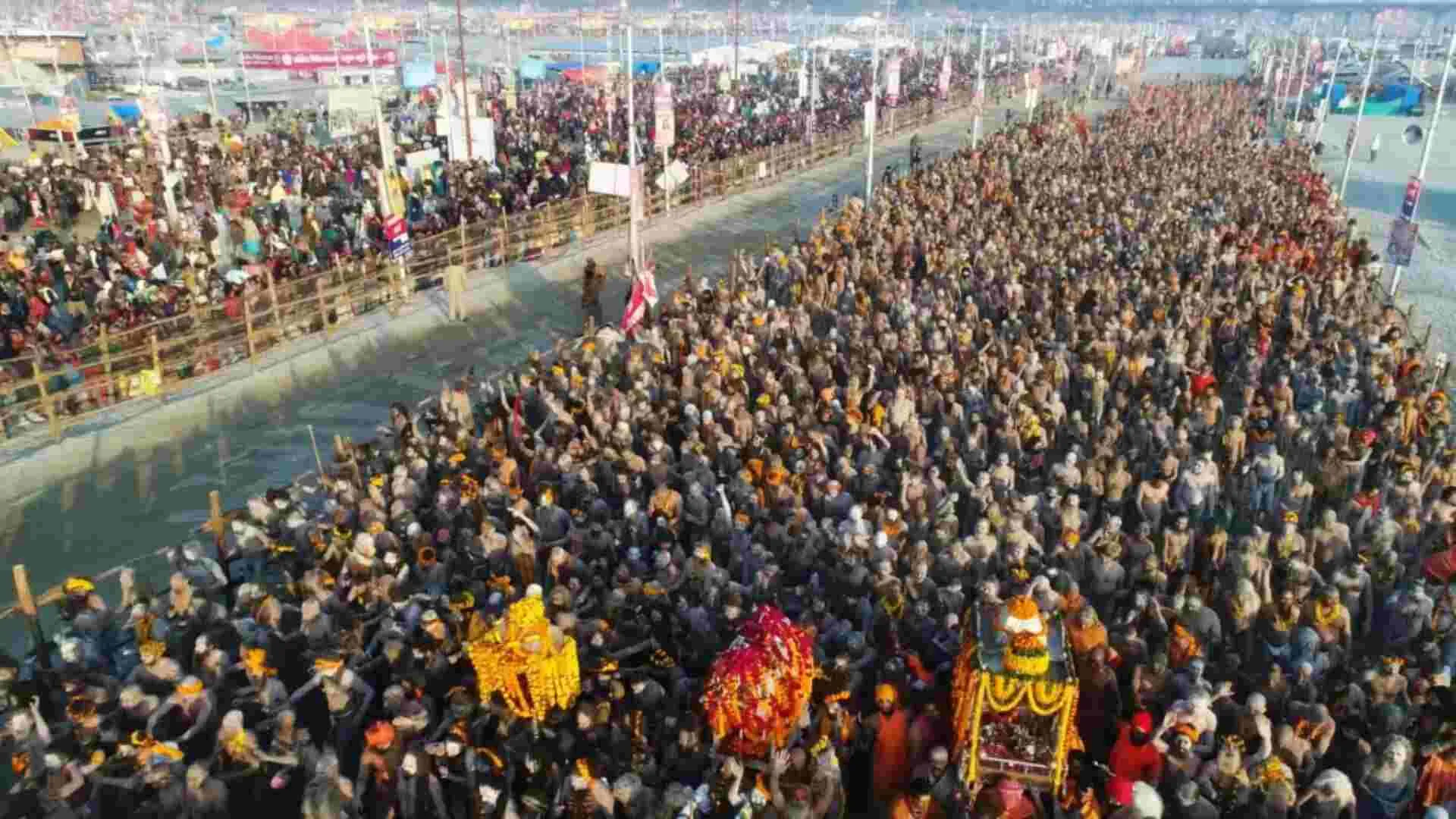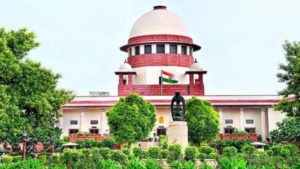In a well-written, well-worded, well-reasoned, well-substantiated and well-analysed judgment titled Iqbal Basith and others vs N Subbalakshmi and others in Civil Appeal No. 1725 of 2020 delivered as recently as on December 14,2020, a three Judge Bench of the Apex Court headed by Justice RF Nariman and also comprising of Justice Navin Sinha and Justice Krishna Murari held clearly, categorically, cogently and convincingly that adverse inference can be drawn against party who does not appear in person to depose. The Bench while allowing appeal against the concurrent findings by the Trial Court and the High Court dismissing a suit filed by plaintiff seeking the relief for permanent injunction. In appeal, the Court noted that the original defendant did not appear in person to depose and be cross-examined in the suit and instead his younger brother deposed on the basis of a power of attorney. So ostensibly the Bench had no hesitation to arrive at the logical, learned and laudable conclusion that, “No explanation was furnished why the original defendant did not appear in person to depose. We find no reason not to draw an adverse inference against defendant in the circumstances.”
To start with, the ball is set rolling in para 1 of this notable judgment wherein it is stated that, “The plaintiffs are in appeal against the concurrent findings by two courts, rejecting their plaint seeking the relief for permanent injunction. The suit was initially dismissed. R.F.A. No.116/1990 preferred by the appellants was allowed by the High Court. The order was set aside by this court in C.A. No. 2072/2000 on 22.07.2004 and the matter was remanded to the High Court.”
To put things in perspective, the Bench then enunciates in para 2 that, “Mr. Basava Prabhu S. Patil, learned senior counsel appearing on behalf of the appellants, submits that the respondents had no concern with the suit property no. 44/6, ad measuring 90 ft. x 110 ft. situated on the J.C. Road in Bangalore. The respondents were the owner of property bearing no. 42, at a distance of 103 ft., with intervening properties also. The respondents illegally attempted to encroach on the appellants property on 10.02.1974 by dumping bamboo and other construction materials, compelling the appellants to institute the present suit. Shri Patil relied upon the reports of the Pleader Commissioner appointed by the Trial Court, and again by the High Court, to submit that the appellants were found to be in possession of the property coupled with the entries in the property tax register and the municipal tax receipts in name of the appellants. The respondents did not claim any title in themselves to the suit property, but feebly sought to question the appellants title in a vague manner. O.S. No. 3334/1984 filed by the respondents was allowed to be dismissed in default. The suit filed by the appellants was only for grant of permanent injunction. No suit with regard to title was therefore framed. The lawful possession of the appellants stood established from Ex.D-1 dated 07.09.1946, filed by the respondents, vesting title in their vendor, O.A. Majid Khan by the Bangalore City Municipality (hereinafter referred to as “the Municipality”) under Section 41(2) of the Mysore City Municipalities Act, 1933 (hereinafter referred to as ‘the Act’) over an area of 75ft. x 110ft., and the subsequent sale deed dated 27.09.1962 by the Municipality in favour of the appellants mother for the remaining area of 15 ft. x 110 ft.”
Without mincing any words, the Bench then goes on to put forth in para 3 that, “Both the Courts held that the respondents had no concern with the suit property, yet ventured to decide that the appellants had failed to establish title and dismissed the suit. The conclusion of the High Court that the identity of the suit property had not been established is perverse and contrary to the evidence on record.”
While elaborating on the facts of the case, the Bench then puts forth in para 7 that, “The suit property bearing no. 44/6 in J.C. Road, Bangalore measures totally 90 ft. x 110 ft. The property originally belonged to the municipality, identified as site no. 10 and 17 J.C. Road, 6th Division, Bangalore. On 08.08.1945, the City Municipal Council resolved to sell 75 ft. x 110 ft. to one O.A. Majid Khan. Sanction for the sale was accorded by the Municipality on 07.09.1946, by Government Order No. L.33923/ML-55-46-6 under Section 41(2) of the Act. The respondents themselves filed a certified copy of the same in the suit, which was marked as Ex. D-1. The said O.A. Majid Khan, by letter no. A7.0.170/4647 dated 17.09.1946 was directed to deposit Rs. 17,361/- as consideration. The Municipal Engineer on 30.09.1946 was directed to hand over possession after deposit of the consideration amount. Possession was handed over to O.A. Majid Khan on 10.10.1946. On 16.04.1956, the Assistant Revenue Officer of the Municipality, informed that the property bearing no. 10 and 17 sold to O.A. Majid Khan had been renumbered as 44, J.C. Road, 25th division.”
While continuing in a similar vein, the Bench then points out in para 8 that, “Sufia Khatoon, the widow of O.A. Majid Khan, sold the property to the mother of the appellants Zahara Khatoon, original plaintiff no. 3, on 10.07.1956 by a registered sale deed. Two confirmatory sale deeds were also executed on 08.04.1958 and 21.08.1959 by the legal heirs of O.A. Majid Khan in favour of Zahara Khatoon after attaining majority. Subsequently on 27.09.1962 the remaining portion of the suit property admeasuring 15 ft. x 110 ft. was sold by the municipality to Zahara Khatoon by a registered sale deed. Zahara Khatoon thus became the owner of the suit area of 90 ft. x 110 ft. of property bearing no. 44/6. The mother of the appellants gifted the property to them in 1966. The necessary entries were made in the property tax register, and the tax receipts demonstrate the payment of tax by the appellants from 1964-65 up to the year 1969-70 and again from 1984-85, 1986-87.”
Significantly, the Bench then postulates in para 9 that, “The present suit was instituted by the appellants in 1974 seeking permanent injunction as the respondents attempted to encroach on their property. The suit schedule property was described as no. 44/6. The respondents in their written statement claimed ownership and possession of property no. 42, acknowledging that other properties lay in between. A feeble vague objection was raised, but not pursued, questioning the title of the appellants. The respondents raised no genuine objection to the validity or genuineness of the government documents and the registered sale deeds produced by the appellants in support of their lawful possession of the suit property. The original defendant no.1 did not appear in person to depose, and be cross-examined in the suit. His younger brother deposed on the basis of a power of attorney, acknowledging that the latter had separated from his elder brother. No explanation was furnished why the original defendant did not appear in person to depose. We find no reason not to draw an adverse inference against defendant no.1 in the circumstances. In Ishwar Bhai C. Patel vs. Harihar Behera, (1999) 3 SCC 457 this Court observed as follows:
“17…..Having not entered into the witness-box and having not presented himself for cross-examination, an adverse presumption has to be drawn against him on the basis of the principles contained in illustration (g) of Section 114 of the Evidence Act, 1872.””
More significantly, the Bench then waxes eloquent with consummate ease in para 14 that, “The appellants were seeking the relief of permanent injunction only. Their title to the suit property was not disputed by the respondents. The respondents acknowledged that they were in ownership and possession of plot no. 42, which had no concern with the suit property and was situated at a distance of 103 feet with other intervening properties. The two reports of the Pleader Commissioner also confirmed the possessory title of the appellants along with property tax registers and municipal tax receipts. The appellants had more than sufficiently established their lawful possession of the suit property.”
Most significantly, the Bench then after considering all the facts before it and the relevant case laws find it no difficult to hold in para 15 that, “The conclusion by the courts below that the appellants had failed to establish title and therefore could not be said to be in lawful possession is therefore held to be perverse and unsustainable. Similarly, the conclusion that the identity of the suit property was not established is also held to be perverse in view of letter dated 16.04.1956 from the municipality, referred to herein above. The contention of the respondents feebly seeking to question the title of the appellants was rejected holding that they had nothing to do with the schedule property and that their conduct was questionable. Yet the appellants were wrongly denied the relief of permanent injunction.
Please read concluding on thedailyguardian.com
In our considered opinion the Trial Court and the High Court both posed unto themselves the wrong question venturing to decide the title of the appellants, and arrived at an erroneous conclusion.”
Finally and as a corollary, the Bench then holds in para 16 that, “On basis of the aforesaid discussion, the materials and impugned orders dismissing the suit and the appeal are therefore not sustainable. We therefore set aside the orders of the Trial Court and the High Court dismissing the suit, and allowed the appeal.”
Before parting, it would be prudent to discuss para 12 which we have not discussed so far. It says that, “Both the courts then proceeded to consider the title of the appellants to decide lawful possession. The respondents had themselves produced a certified copy of Ex. D1 dated 07.09.1946. The appellants produced photocopies of all other resolutions, government orders and sale deed in favour of their vendor O.A. Majid Khan by the Municipality. The failure to produce the originals or certified copies of other documents was properly explained as being untraceable after the death of the brother of P.W.1 who looked after property matters. The attempt to procure certified copies from the municipality was also unsuccessful as they were informed that the original files were not traceable. The photocopies were marked as exhibits without objection. The respondents never questioned the genuineness of the same. Despite the aforesaid, and the fact that these documents were more than 30 years old, were produced from the proper custody of the appellants along with an explanation for non-production of the originals, they were rejected without any valid reason holding that there could be no presumption that documents executed by a public authority had been issued in proper exercise of statutory powers. This finding in our opinion is clearly perverse in view of Section 114(e) of the Indian Evidence Act, 1872, which provides that there shall be a presumption that all official acts have been regularly performed. The onus lies on the person who disputes the same to prove otherwise.”
All told, we can thus clearly infer that the three Judge Bench of the Apex Court have with strong and substantial reasons very rightly concluded that as the original defendant did not appear in person to depose so there is no reason not to draw an adverse inference against defendant in the circumstances! The Court also very rightly referred to judgment of Lakhi Baruah vs Padma Kanta Kalita (1996) 8 SCC 357 which dealt with the admissibility in evidence of thirty years old documents produced from proper custody! No denying!














